Silkie Rooster vs Hen: Deciphering the Differences
Ever found yourself gazing upon a flock of Silkies, trying to distinguish the roosters from the hens? Trust me, I’ve been there! Silkie rooster vs hen, what are their differences?
Silkies, originating from China, are a unique breed of chicken admired for their fluffy plumage, which feels silk-like (hence the name). These birds have a rich history, with tales of them being a part of ancient Chinese medicine.
Significance in Poultry
Silkies are indeed one of the most easily recognizable chicken breeds, and their appearance is enough to catch anyone’s eye. However, their significance in poultry transcends their appearance. They’re celebrated for their gentle temperament, mothering instinct, and their suitability for various environments, particularly for those venturing into the world of backyard poultry keeping.
A Docile Nature
Silkies are renowned for their calm and friendly demeanor. They are often described as affectionate, which is quite an accolade in the poultry world. Unlike some more aggressive breeds, Silkies generally get along well with other chickens and even other types of birds.
For families, especially those with children, this gentle disposition makes Silkies an ideal choice. They’re often considered more like pets rather than mere poultry, forming bonds with their human caretakers and offering an interactive and engaging experience.
Many Silkie owners speak of the emotional connection they feel with these birds. Their friendly nature and engaging personalities often lead to a more profound and rewarding relationship, setting them apart from other poultry breeds.
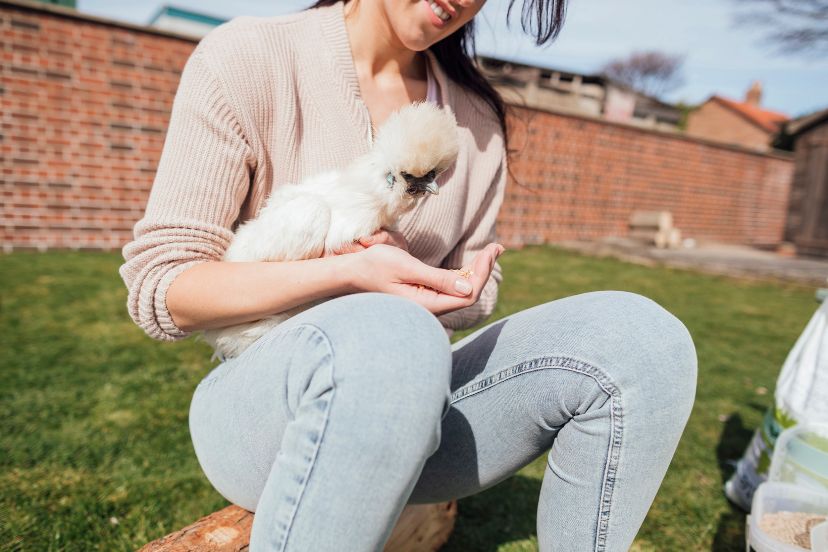
Excellent Mothers: The Brooding Stars
Silkies possess an extraordinary brooding instinct. Their desire to sit on eggs and care for chicks is unparalleled among chicken breeds. Even Silkie hens without eggs of their own will often take to brooding others’ eggs, including those of different bird species!
This trait makes them invaluable in poultry settings where natural brooding is desired. They’ll not only hatch their eggs but will also care for the chicks, teaching them to eat and protecting them from harm.
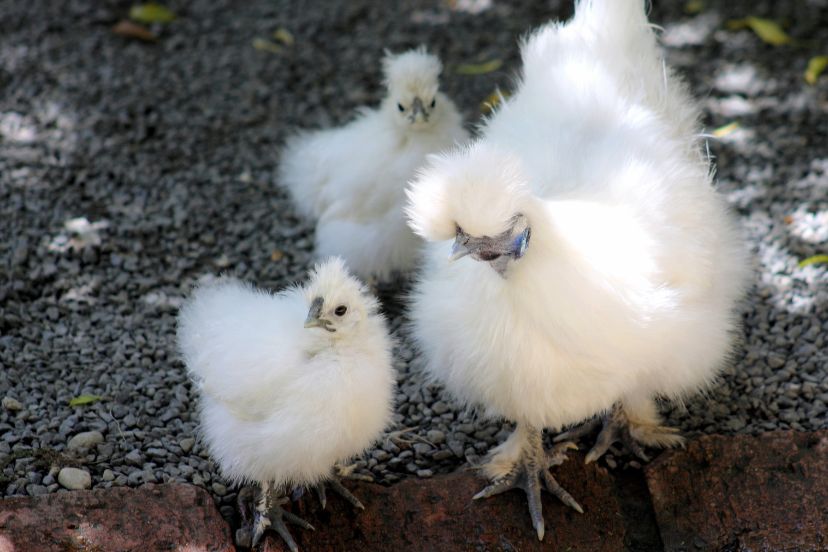
Adaptable to Backyard Living
Silkies are particularly suitable for backyard environments. Their smaller size and less aggressive nature make them ideal for urban or suburban settings where space might be limited. They’re also known to be less destructive to gardens and landscape features compared to some other chicken breeds.
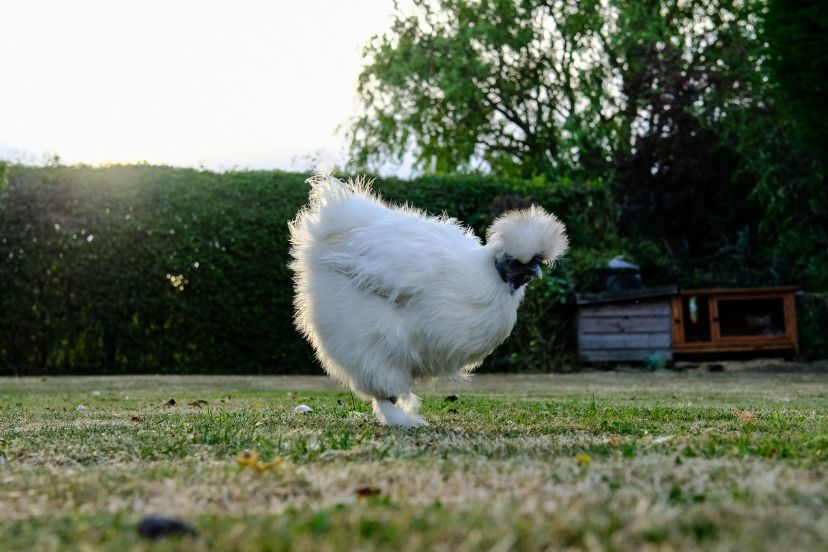
Egg and Meat Production
While not primarily raised for meat or egg production, Silkies do lay a fair amount of small, cream-colored eggs. Their meat, particularly in the black-fleshed variety, is considered a delicacy in some cultures, and as previously mentioned, it has been associated with medicinal properties.
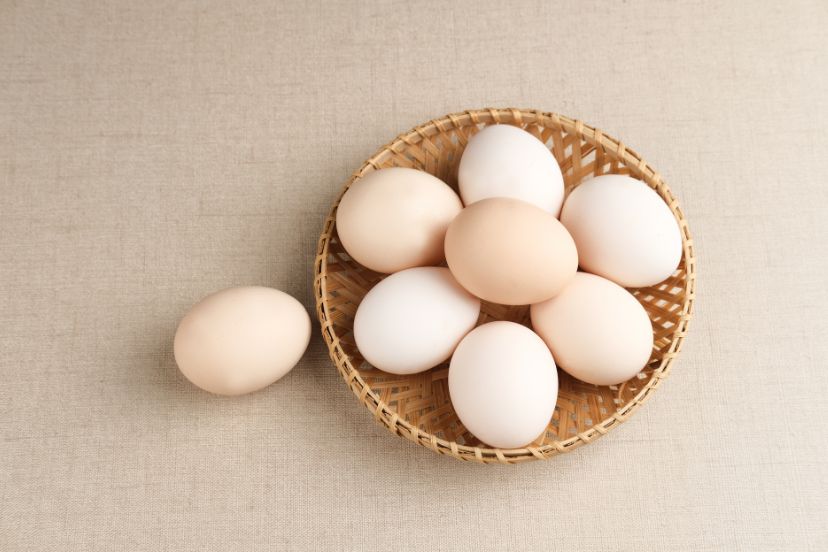
Physical Features and Behavior
Silkies are cherished for a myriad of reasons, but their physical features, particularly their distinctive plumage and color variations, make them stand out in the poultry world. Furthermore, understanding the behavioral patterns of roosters versus hens can significantly enhance the experience of raising them. Let’s take a more in-depth look at these attributes.
Color Variations
Silkies are indeed a visual delight. They can adorn a variety of colors, making each bird unique. Common colors include:
Black: A deep, rich shade that often accompanies a mesmerizing sheen.
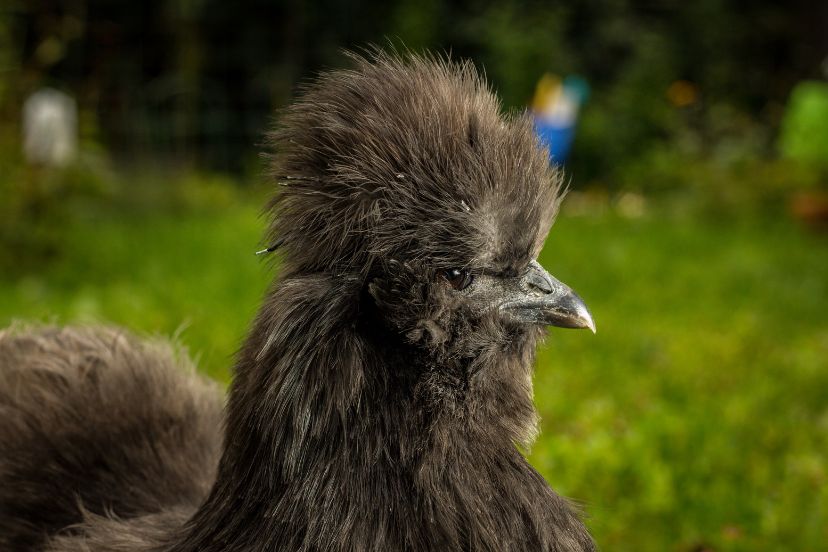
White: Pure, pristine, and elegant. White Silkies are often the image that comes to mind when one thinks of the breed.
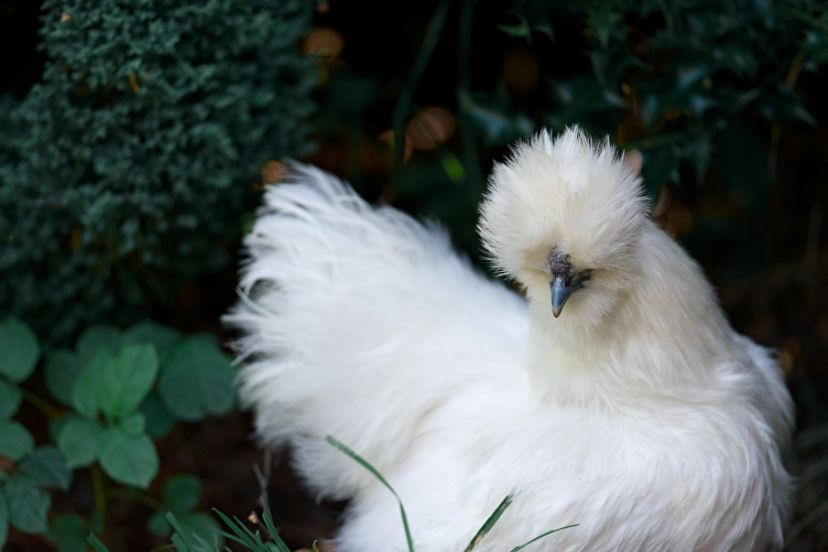
Blue: Not a bright blue, but more of a subtle slate or grayish-blue. It’s a color that often captivates poultry enthusiasts due to its rarity in the chicken world.
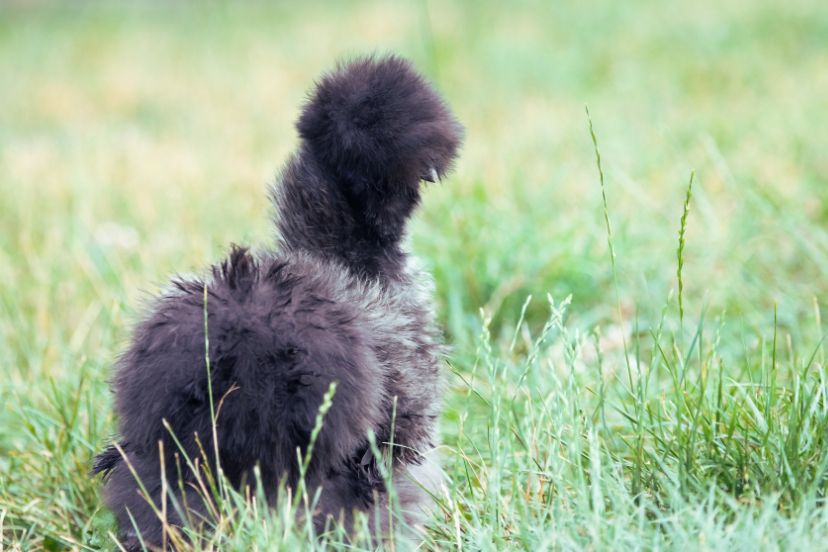
While some chicken breeds exhibit specific color variations based on gender, this is not the case with Silkies. Both roosters and hens can exhibit the same range of colors. Hence, if you’re attempting to differentiate between the genders based on color alone, you’ll find yourself at a crossroads.
The soft, downy texture of Silkie feathers is one of their signature features. It gives them a unique, cloud-like appearance, and touching them often feels like stroking velvet or silk.
Silkie Rooster vs Hen
While both genders are adorned with this fluffy plumage, there’s a subtle difference to note as the birds mature. Roosters may develop elongated, streamer-like feathers that protrude from their crest or head. This can be one of the cues when trying to identify a mature Silkie rooster from a hen, though it’s essential to remember that not all roosters will develop pronounced streamers.
Roosters: The Confident Protectors
Roosters, across most chicken breeds, are often more assertive, and Silkies are no exception. They’re more likely to strut with confidence, showcasing a certain bravado. Their protective nature is evident, especially when they sense threats to their flock. This proactive approach to safeguarding is one of their commendable traits.
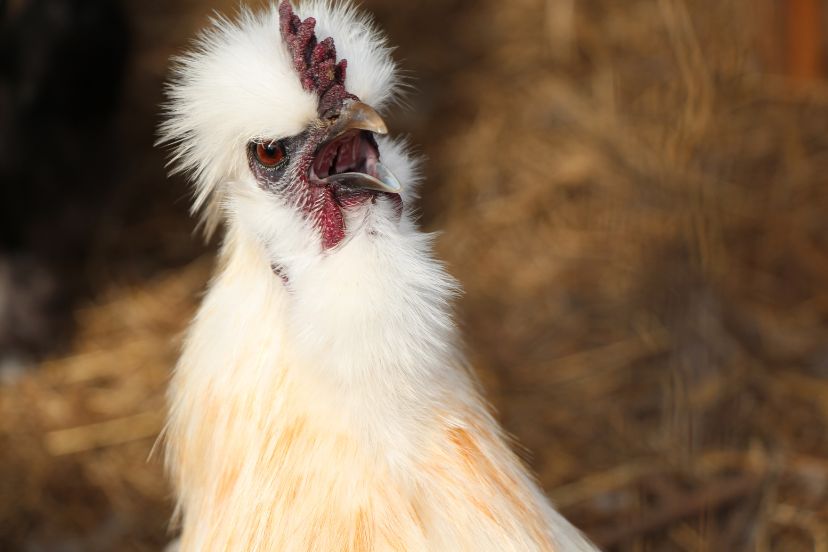
Hens: The Gentle Mothers
Silkie hens exude a more reserved nature. Their maternal instincts are pronounced, making them exceptional mothers. Whether it’s sitting on eggs, guiding their chicks, or merely displaying nurturing behavior, their mothering tendencies are a sight to behold.
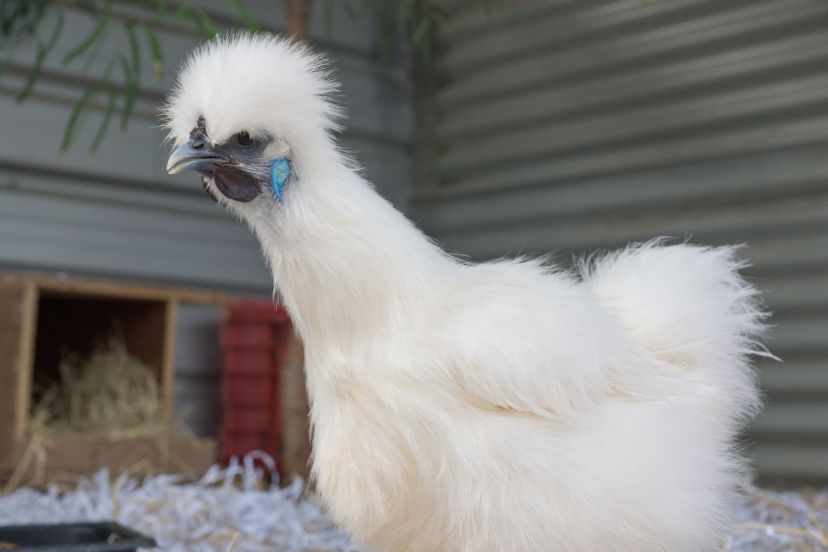
| Silkie Rooster | Silkie Hen |
| weight: 2lbs-4lbs height: 8in-14in | weight: 1.5lbs- 3lbs height: 8in-14in |
| larger walnut-shaped comb | smaller v-shaped comb |
| grows spurs up to 1 inch | doesn’t grow spurs |
| longer crown ‘streamer’ feathers | rounded and uniformed crown feathers |
| wattle develops faster and grows larger | wattle develops later and remains smaller |
Although the aforementioned data might help you figure out the differences between a silkie hen vs rooster, you might need more data to help properly sex silkie chickens if you’re not overly experienced at determining the sex of a young bird.
For one thing, you can look at the posture of the silkies. Silkie roosters will stand more upright, and they will often hold their tails higher than females. The silkie hen will usually hold their bodies more horizontally to the ground.
You can also look at their feet because males will have thicker feathers on their feet compared to females. Unfortunately, you can only use this method of sexing if the chickens you are comparing belong to the same brood since this trait is passed down from the parents.
Lastly, you could consider the crowing behavior of your chickens. Silkie roosters will start crowing when they reach about 4 or 5 months of age. The vast majority of hens will not actively crow unless they’re trying to establish a position for themselves in the “pecking order” or they are wholly unique.
These differences between silkie rooster vs hen should make identifying them easy, especially as they get older and their differences become more noticeable.
Why Knowing the Difference Matters
The joy of keeping Silkies isn’t just in their lovely plumage and friendly nature, but also in ensuring a harmonious environment for them. Knowing whether you have a rooster or a hen can make a significant difference in how you manage your flock. Let’s delve into why these distinctions are crucial.
Breeding and Fertility: If you’re keen on breeding Silkies, knowing the roosters from the hens is the first step. You’ll need both for fertilization. If you don’t intend for your hens to produce chicks, it’s essential to keep roosters separate from laying hens. Unwanted fertilization can lead to unexpected chicks, which may pose a problem if you’re not equipped to care for them.
Space and Territory: Roosters are territorial by nature. Having too many roosters in a confined space can lead to disputes, potentially resulting in injuries. It’s essential to know how many roosters you have to provide them with adequate space.
Roosters generally require more space than hens. Knowing the number of roosters you have will guide you in optimizing your coop’s layout, ensuring each bird has enough room to move around and establish its territory without conflicts.
Flock Dynamics and Peace: Just as in any community, a balance in gender dynamics ensures peace in a flock. Having too many roosters can lead to aggressive behavior, stress among the hens, and even reduced egg-laying due to constant mating attempts.
Understanding the behavioral tendencies of each gender allows for better management. For instance, if a hen exhibits brooding behavior, providing her with a quiet, comfortable spot can aid in her nesting process. Recognizing a rooster’s protective stance can help you anticipate potential threats or disturbances in the environment.
Effective Planning and Expansion: If you plan to expand your flock or introduce new birds, knowing your current gender ratio can guide your decisions. This ensures a balanced and harmonious integration.
If you’re breeding Silkies for specific traits, you’ll need to identify the best roosters and hens that exhibit those qualities. Differentiating between the genders is crucial for this selective process.
Still Confused? Read this…
- Watch out for crowing or attempts at it! Generally, hens don’t crow.
- Also, roosters might be seen dancing around hens, trying to grab their attention.
- While not foolproof, looking for pointed saddle and hackle feathers can give you clues. Roosters often have them; hens usually don’t.
- While both genders make sounds, roosters have a wider vocal range. They might make more alert noises, especially if they sense danger.
Conclusion
Silkie rooster vs hen, with their cloud-like plumage, can indeed puzzle many. But with careful observation and a tad bit of knowledge, you can become adept at telling them apart. Remember, it’s not just about knowing; it’s about creating a balanced, happy environment for your feathered friends. So, next time you’re sipping your morning coffee and watching your flock, see if you can spot the subtle differences. Who knows? Maybe there’s a proud rooster or a nurturing hen right under your nose!
FAQs
Do Silkie roosters crow as loudly as other roosters? Generally, they’re quieter than many breeds, but yes, they do crow!
At what age can you typically differentiate a Silkie rooster from a hen? By 4-6 months, many of the distinguishing features and behaviors become more apparent.
Can Silkie hens and roosters coexist peacefully in the same coop? Yes, especially if they’ve been raised together. However, always monitor flock dynamics.
Do Silkie hens make good mothers? Absolutely! They’re known for their broodiness and excellent mothering skills.
If I want eggs, do I need a rooster in my flock? No, hens will lay eggs without a rooster. However, the eggs won’t be fertilized without one.




